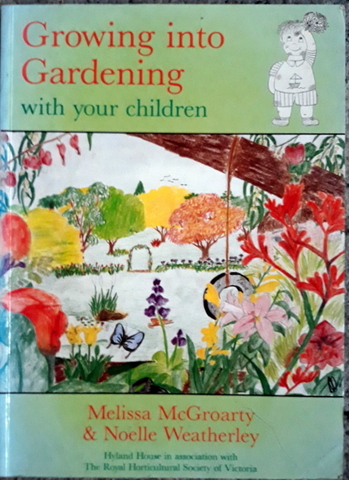If we are looking at living a more sustainable lifestyle, I believe that one of the most important actions we can accomplish is to take our children with us on that journey. To a greater or lesser extent, these books can help.
Growing Sustainable Together – Shannon Brescher Shea – North Atlantic Books (US) 2020 ISBN 978 1 62317 471 2 – This is a great book! There are chapters on cultivating kindness, growing food, walking biking and public transport, energy efficiency and waste reduction, rejecting materialism, environmental volunteering, engaging kids in environmental activism and envisioning a sustainable future. Each chapter is replete with stories from the author and tools and techniques for engaging kids in each of the subjects. At the end of each chapter are details around a family activity highlighting the main points of the chapter, and a series of suggested resources to look for including picture books and young adult activity books. If you have kids this one should be a ‘must have’ I only wish it had been around when our kids were young. The book has no photos or line drawings.
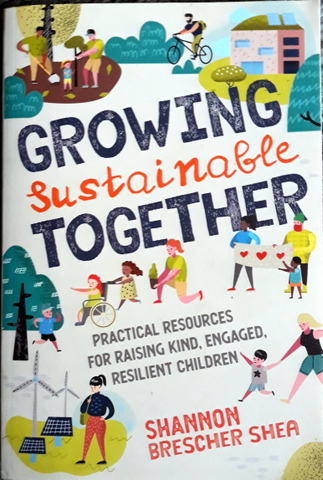
Edible Schoolyard – Alice Waters – Chronical Books (US) 2008 ISBN 978 0 8118 6280 6 – This book is about a school in Berkley, California, USA where one of the teachers (the Author) was the driver behind turning an area of unused land at the school into a food garden, and started the Edible Schoolyard. The book is also about the various ways they used the garden to teach the kids various subjects. It is not really a ‘how to’ rather a ‘we did’. There are lots and lots of colour photos demonstrating what they achieved.
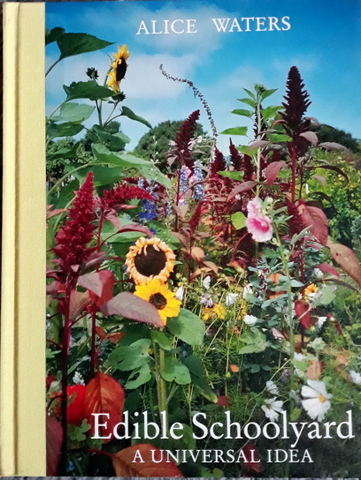
How to Grow a School Garden – Arden Bucklin Sporer & Rachel Kathleen Pringle – Timber Press (US) 2010 ISBN 978 1 60469 000 2 – This is a ‘how to’ book! Chapter one talks about the why of a school garden, garden based and experiential learning and all of the positives for having a school garden. Chapter two talks about setting up with school personnel and parents to develop the garden, chapter three talks about how to get the best out of the site by conducting an inventory and developing a plan, chapter four discusses budgeting, fundraising and other financials. Chapter five goes through the requirements for the school developing their garden program, chapter six covers building soil health, supporting biodiversity and organic pesticides, Chapter seven covers techniques and processes for running the school garden program. Chapter eight covers the techniques of planting, harvesting and cooking in the garden and chapter nine covers suggestions for year round lessons and activities in the garden. It does obviously reflect the US experience but has lots of great ideas and plenty of colour photos.
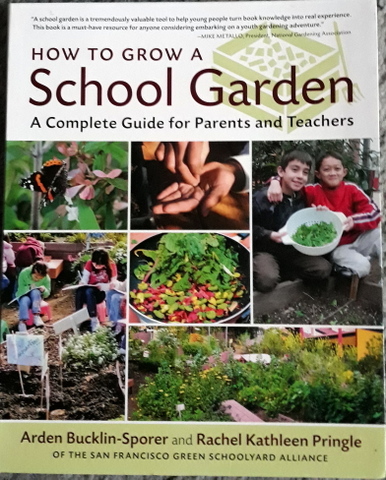
Grow It Eat It – Royal Horticultural Society – Dorland Kindersley Ltd (UK) 2008 ISBN 978 1 40532 810 4 – This book does not have chapters in the classical sense, but has small sections or subjects, categorised as ‘Know it’, ‘Grow it’ and ‘Eat it’. Most of the ‘know it’ sections are in the front of the book and cover basics like plant needs, pots and plots, making markers and labels, seed to seedling and flower to fruit, and composting. Each ‘Grow it’ features the idiosyncrasies of growing a particular fruit, vegetable or herb (15 all up) and usually followed by an ‘Eat it’ covering a recipe for the previous plant(s). The ‘Grow it’ covers sowing, planting and maintaining each plant in simple steps with at least one photo covering each step. In a similar way the ‘Eat it’ lists the ingredients and then steps for each recipe, also in photos. Towards the end there is a ‘know it’ about seed savings followed by two pages detailing more recipes. This is a great book for kids with lots and lots of colourful photos!
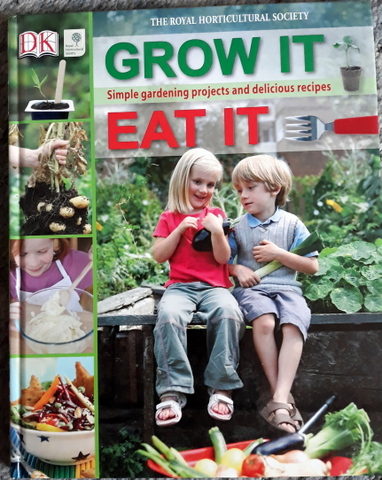
Get Gardening – Barbara Taylor – Parragon Books Ltd (UK) 2007 ISBN 978 1 4075 2076 6 – This is a kids gardening book (obviously) and although it does not deal exclusively with edibles the majority of the book does apply to species we eat. It is set up around a series of kid-friendly projects although it does provide general comments about safety, plant growing tips, garden tools and simple plant terminology. Projects include a cress caterpillar, windowsill salad, re-growing cut vegetable tops, growing strawberries in an old boot and making a herb garden. There are also brief pages on seasonal growing, plant propagation and worms. Lots and lots of colour photos.
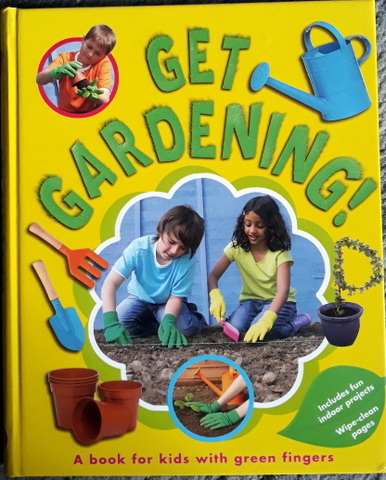
How to Guzzle Your Garden – Jackie French – Angus & Robertson (AUS) 2001 ISBN 978 0 207 19793 8 – The book starts off with a quick intro to Jackie’s garden journey, followed by general comments on how to have a guzzle-able garden. Chapters 3, 4, 5 and 6 deal with fruit, how to grow it, easy to grow tree fruits, fast growing fruits of various sorts and growing fruits in containers. Chapter seven covers growing fruit and veg from seed. Chapters 8 and 9 cover mostly fruit, but some veg growing tips for school gardens. Chapter 10 covers a few native fruits, chapter 11 covers a few edible weeds and chapter 12 covers edible flowers. Chapter 13 covers 16 unusual fruit and veg growing projects including growing a potato in a bucket, a pineapple in a pot and a salad in a box. The book has no photos, but lots of line drawings.
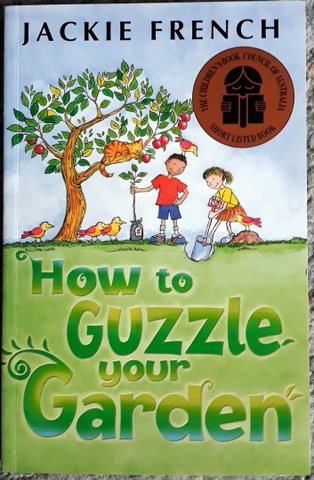
How Green is Your Class? – Kate Brown – Continuum Books (US) 2008 ISBN 978 1 84706 122 5 – This book is a guide for teachers on how to support students who want to make a difference. Chapter one gives guidance on how to use the book, chapter two talks about small everyday practical actions like reducing carbon or ecological footprint, using your consumer power or personal humanitarian actions. Chapter three talks about methods of awareness raising for self and others about environmental issues and chapter four talks about lobbying, methods of putting pressure on those in power to achieve environmental aims. Chapter five talks about how to get into a position of power to influence change. While chapters four and five have lots of good information, they do reflect operating in the American system. Chapter six talks about donating time, money or things you don’t need. There are no photos or line drawings in this book.
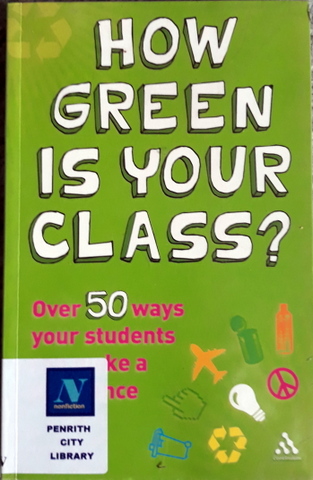
Kitchen Garden Cooking with Kids – Stephanie Alexander with Anna Dollard – Lantern (Penguin Publishing) (AUS) 2006 ISBN 978 1 920989 49 1 – This is the story of Stephanie Alexander’s school food garden. The first chapter talks about what inspired it and how they found the school, put the plan together, implemented and launched the garden. Chapter two covers the history of the garden from its inception in 2001 through to 2005 and into the future, what worked and what didn’t, how they attracted volunteers and what they planted where. Chapter 3, the bulk of the book covers menus and recipes for the kids to make, including the master salad recipe and four basic foundation recipes: basic shortcrust pastry; basic spicy rice filling; basic chicken stock and basic pasta dough. The rest of the book is kid friendly recipes and menus set out on a season by season basis. The book has lots and lots of colour photos,
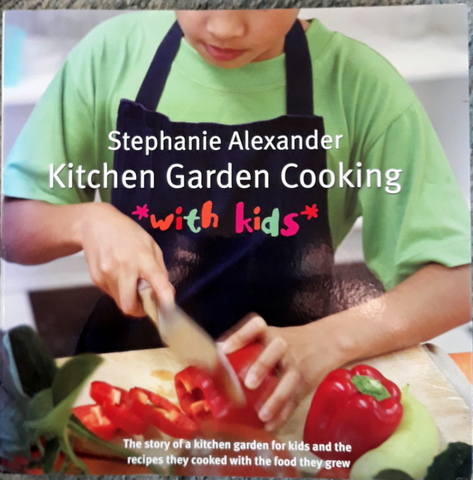
Making Bread Together – Emmanuel Hadjiandreou – Ryland Peters and Small (UK) 2014 ISBN 978 1 84975 485 9 – OK, I am taking a bit of poetic license with this one but to me, making bread with kids is a great way to teach a skill as well as creating an opportunity to have conversations about lots of things which fit in well with environmental awareness. The book starts with the basics of bread baking and then moves into how these are applied to make breads eaten at breakfast, lunch and lunchbox breads, teatime breads and sweet treats. There are lots of wonderful kid friendly recipes and colour photos to show how they are produced.
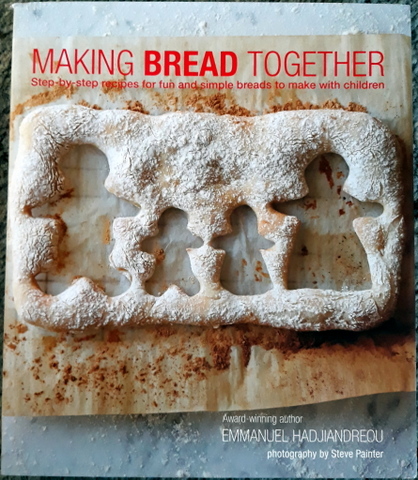
The ABC Book of Gardening for Kids – Helen Kushing – ABC Books (AUS) 2001 ISBN 978 0 7333 0850 3 – This A4 format book is not big at only 45 pages long but it has lots of good ideas. Chapter one is about garden preparation; planning, planting, no-dig, compost and worms. Chapter two talks about seeds, what they do, collecting them, germination and sprouting. Chapter three covers the processes of actually making the garden including building a pea or bean tepee. Chapter four talks about trees, including tree planting, fruit trees and strange trees! Chapter five covers the garden ecosystem, good, and bad bugs. Chapter Six covers a whole stack of kid friendly garden projects like mini-gardens, a spud tower, strawberry mountain and peaceful pond. There are also eleven crafty projects scattered throughout the book such as seed craft, hairy eggheads, making a lavender bag and potted topiary. It is a great book to teach kids the basics of food growing with lots of colour photos and colourful hand drawings.
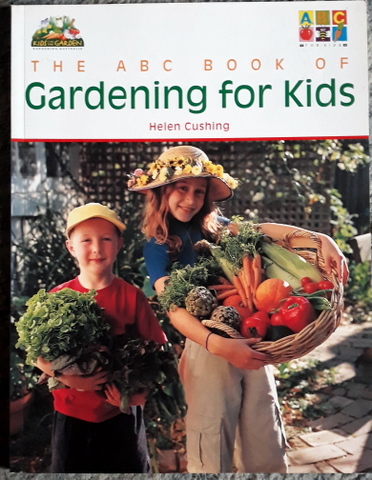
Growing into Gardening with your children – Melissa McGroarty & Noelle Weatherley – Hyland House (AUS) 1993 ISBN 978 1 875657 19 3 – This is a great book to help introduce kids of almost any age to the garden. The first two parts are ‘gardening with a baby’ and ‘gardening with a toddler’. Food in the garden is also introduced early with sections on veggie gardens, veggies in containers and the home orchard. This is followed by nature in the garden including food chains and pests. Indoor plants are given a bit of coverage, followed by a section landscaping and caring for trees and shrubs outside. The next section covers plant names, climatic zones, soil and how plants work, followed by a section on looking after plants covering compost, manures, water, weeds, protecting plants and pruning. There is then a section on plant propagation covering seeds and bulbs, and a section called Food From the Garden on starting a veg garden and a section on creating a balanced mini-ecosystem in the garden as a special project. While there is not a vast amount of data on each point, it is a great introduction with lots of kid friendly garden projects throughout the book. The book has lots of line drawings.
